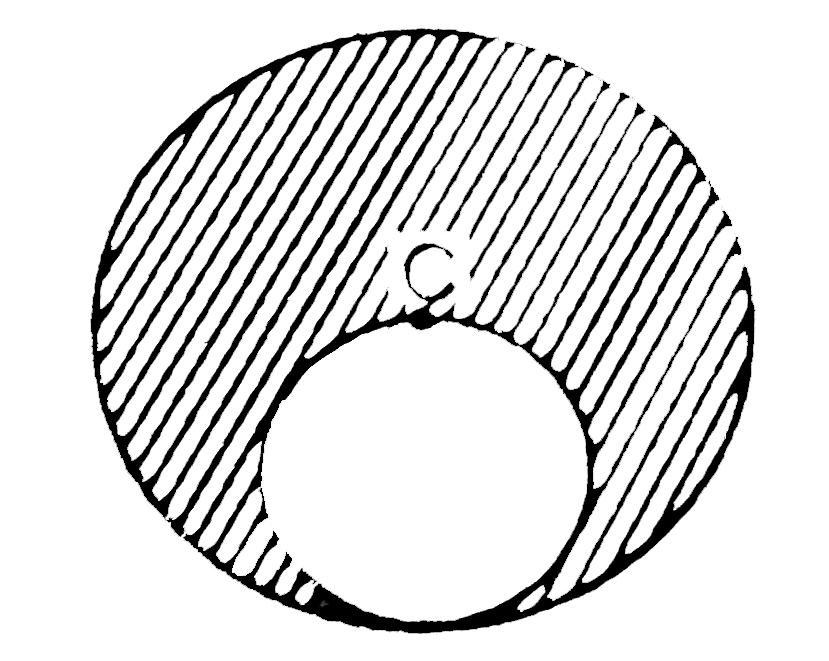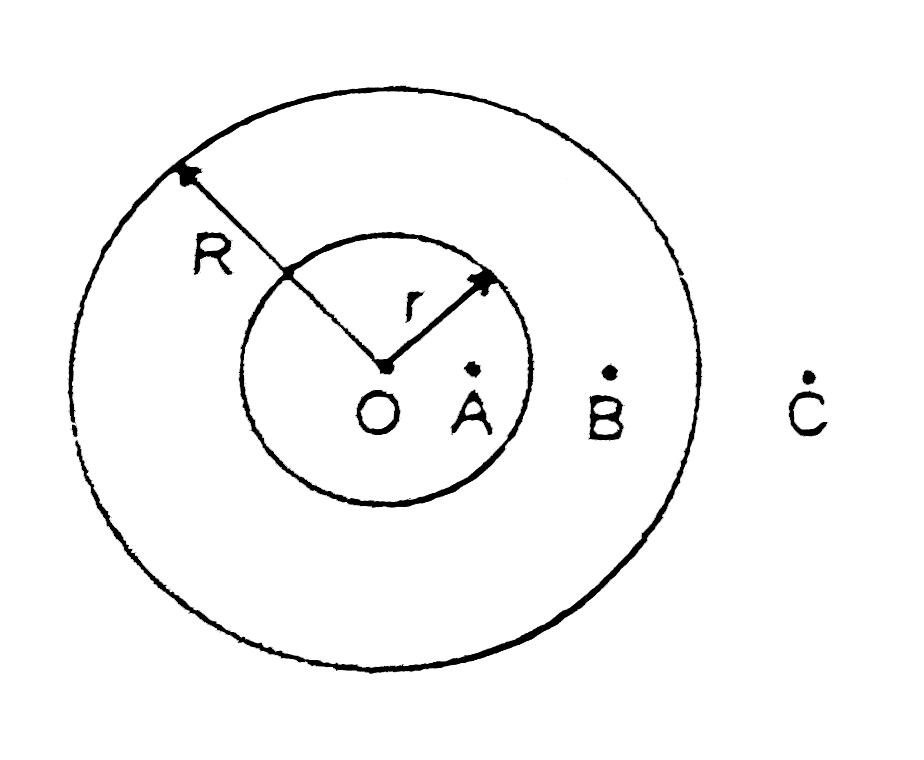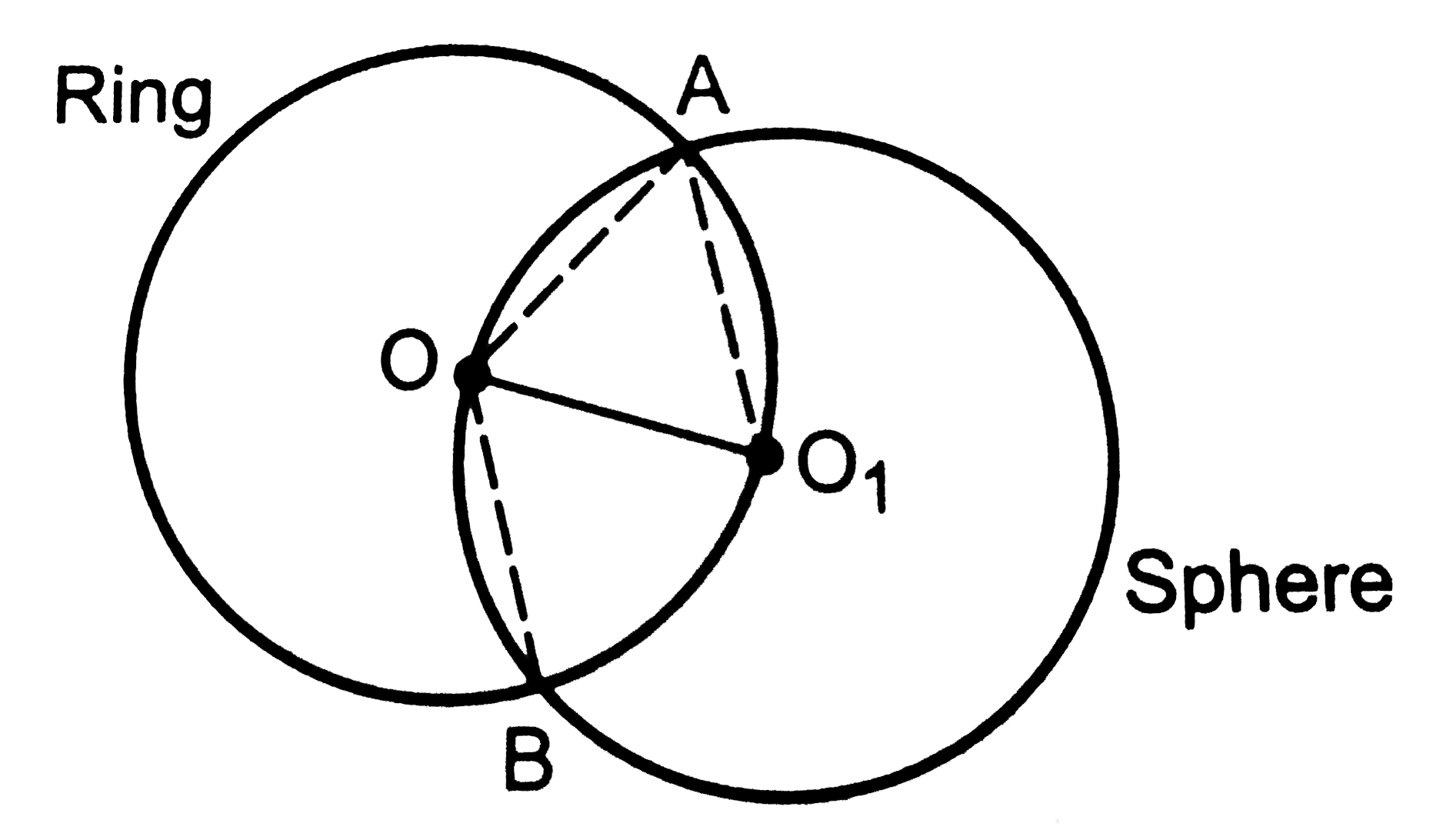A uniformly charged conducting sphere of 2.4m diameter has a surface density of 80.0μC/m2. (a) Find the charge on the sphere (b) What is the total electric flux leaving the surface of the sphere ?
To solve the problem step by step, we will address both parts of the question: (a) finding the charge on the sphere and (b) calculating the total electric flux leaving the surface of the sphere.
1. Calculate the radius of the sphere:
r=D2=2.4m2=1.2m
2. Calculate the surface area of the sphere:
A=4πr2
Substitute r=1.2m:
A=4π(1.2)2=4π×1.44≈4×3.14×1.44≈18.1m2
3. Calculate the total charge Q on the sphere using the surface charge density:
Q=σ×A
Substitute σ=80.0×10−6C/m2 and A≈18.1m2:
Q=(80.0×10−6)×18.1≈1.448×10−3C
Thus, the charge on the sphere is approximately:
Q≈1.447mC(or 1.447×10−3C)
Part (b): Calculate the total electric flux leaving the surface of the sphere
1. Use Gauss's Law to find the electric flux Φ:
Φ=Qϵ0
where ϵ0=8.85×10−12C2/(N m2).
2. Substitute the values:
Φ=1.448×10−38.85×10−12≈1.63×108N m2/C
Thus, the total electric flux leaving the surface of the sphere is approximately:
Φ≈1.63×108N m2/C
Final Answers:
- (a) Charge on the sphere: Q≈1.447mC
- (b) Total electric flux: Φ≈1.63×108N m2/C
r=D2=2.4m2=1.2m
A=4πr2
Substitute r=1.2m:
A=4π(1.2)2=4π×1.44≈4×3.14×1.44≈18.1m2
Q=σ×A
Substitute σ=80.0×10−6C/m2 and A≈18.1m2:
Q=(80.0×10−6)×18.1≈1.448×10−3C
Q≈1.447mC(or 1.447×10−3C)
Φ=Qϵ0
where ϵ0=8.85×10−12C2/(N m2).
Φ=1.448×10−38.85×10−12≈1.63×108N m2/C
Φ≈1.63×108N m2/C
- (a) Charge on the sphere: Q≈1.447mC
- (b) Total electric flux: Φ≈1.63×108N m2/C
Topper's Solved these Questions
- ELECTROSTATICSBook:DC PANDEY ENGLISHChapter:ELECTROSTATICSExercise:Example Type 5
Explore 5 Videos
- ELECTROSTATICSBook:DC PANDEY ENGLISHChapter:ELECTROSTATICSExercise:Example Type 6
Explore 4 Videos
- ELECTROSTATIC POTENTIAL AND CAPACITORSBook:DC PANDEY ENGLISHChapter:ELECTROSTATIC POTENTIAL AND CAPACITORSExercise:(C) Chapter exercises
Explore 50 Videos
- GRAVITATIONBook:DC PANDEY ENGLISHChapter:GRAVITATIONExercise:All Questions
Explore 135 Videos
Similar Questions
(a) Using Gauss's law, derive an expression for the electric field intensity at any point outside a uniformly charged thin spherical shell of radius R and charge density σC/m2. Draw the field lines when the charge density of the sphere is (i) positive, (ii) negative.
(b) A uniformly charged conducting sphere of 2.5 m in diameter has a surface charge density of 100 μC/m2. Calculate the
(i) charge on the sphere
(ii) total electric flux passing through the sphere.
View SolutionA uniformly charged conducting sphere is having radius 1 m and surface charge density 20 Cm−2. The total flux leaving the Gaussian surface enclosing the sphere is
View Solution
Knowledge Check
A uniformly charged conducting sphere of 4.4 m diameter has a surface change density of 60μCm−2. The charge on the sphere is
A7.3×10−3CB3.7×10−6CC7.3×10−6CD3.7×10−3C
If a charge is enclosed by the surface of the sphere then total flux emitted from the surface will be:
View SolutionFind out electric field intensity due to uniformly charged solid non-conducting sphere of volume charge density ρ and radius R at following points :
(i) At a distance r from surface of sphere (inside)
(ii) At a distance r from the surface of sphere (outside)
View SolutionA solid of radius 'R' is uniformly charged with charge density ρ in its volume. A spherical cavity of radius R2 is made in the sphere as shown in the figure. Find the electric potential at the centre of the sphere.

View SolutionA Uniformly charged solid non-conducting sphere of uniform volume charge density ρ and radius R is having a concentric spherical cavity of radius r. Find out electric field intensity at following points, as shown in the figure :

(i) Point A (ii) Point B
(iii) Point C (iv) Centre of the sphere
View SolutionCharge density of the given surface is s. Then electric field stranght at the centre (of quarter sphere) is

View SolutionA charge q0 is distributed uniformly on a ring of radius R. A sphere of equal radius R constructed with its centre on the circumference of the ring. Find the electric flux through the surface of the sphere.
View SolutionA Charge Q is distributed uniformly on a ring of radius r. A sphere of equal r is constructed with its centre at the periphery of the ring (figure 30.12) Find the flux of the electric field through the surface of the sphere.

View Solution